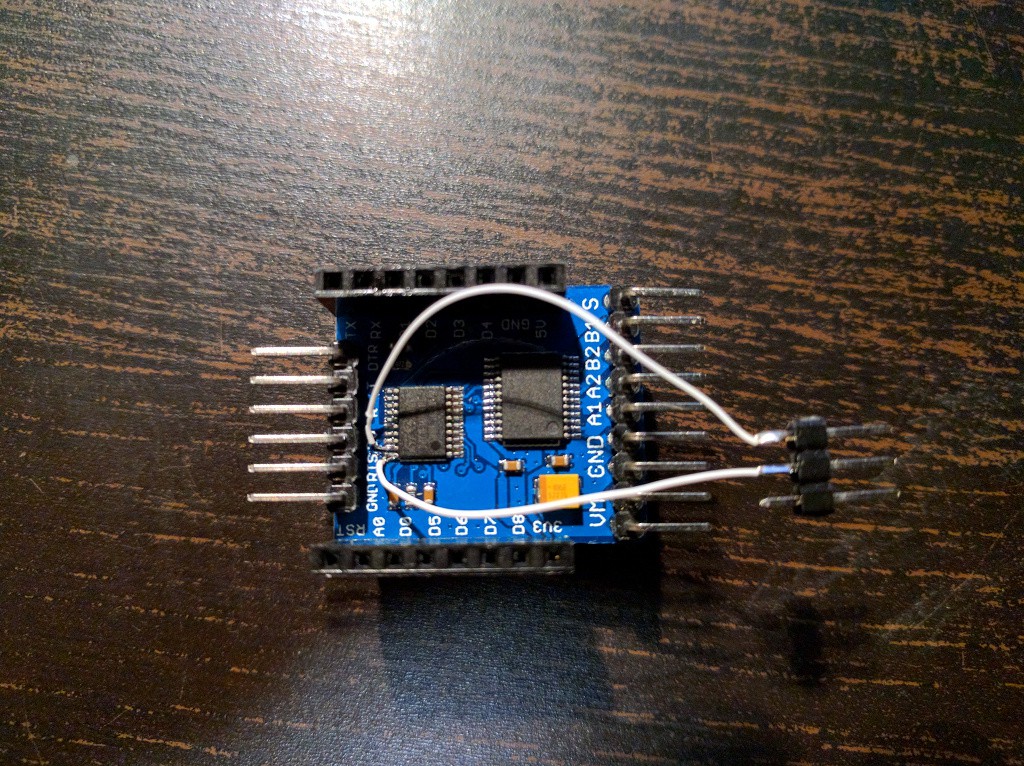Second approach to this is using the SWD protocol with my Chinese ST-Link V2 clone. That requires getting at the SWD pins. Fortunately, they are near the edge of the chip:

Then I connected it according to the pinout of my programmer (the second one):

Now just "make program" in that template, and...
openocd -f /usr/share/openocd/scripts/board/stm32f0discovery.cfg -f extra/stm32f0-openocd.cfg -c "stm_flash `pwd`/main.bin" -c shutdown Open On-Chip Debugger 0.9.0 (2015-09-02-10:42) Licensed under GNU GPL v2 For bug reports, read http://openocd.org/doc/doxygen/bugs.html Info : The selected transport took over low-level target control. The results might differ compared to plain JTAG/SWD adapter speed: 1000 kHz adapter_nsrst_delay: 100 none separate srst_only separate srst_nogate srst_open_drain connect_deassert_srst Info : Unable to match requested speed 1000 kHz, using 950 kHz Info : Unable to match requested speed 1000 kHz, using 950 kHz Info : clock speed 950 kHz Info : STLINK v2 JTAG v17 API v2 SWIM v4 VID 0x0483 PID 0x3748 Info : using stlink api v2 Info : Target voltage: 3.497322 Info : stm32f0x.cpu: hardware has 4 breakpoints, 2 watchpoints stm_erase Error: timed out while waiting for target halted TARGET: stm32f0x.cpu - Not halted in procedure 'stm_flash' in procedure 'reset' called at file "extra/stm32f0-openocd.cfg", line 8 in procedure 'ocd_bouncer' Makefile:72: recipe for target 'program' failed make: *** [program] Error 1
Failure.
I suspect that I shouldn't be using the configuration for the discovery board, but somehow write my own, however, I can't seem to be able to find any examples...
 deʃhipu
deʃhipu
Discussions
Become a Hackaday.io Member
Create an account to leave a comment. Already have an account? Log In.